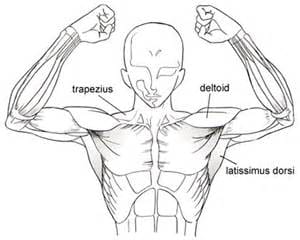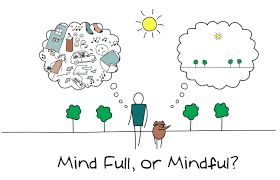 Burnout is a common outcome amongst massage therapists of all sorts. We try to do too many sessions per day to make enough money. Pushing sometimes beyond our threshold is a good thing, but to do it all the time is crazy. Finally the body says no-in one form or another, always getting a bit more emphatic in its messages. If we still don't respond, the consequences can be dire. I will be posting tips to avoid burnout from time to time for therapists, and this is one. Practice what you preach. While you're preaching it. When you ask a client to 'relax', 'breathe', 'open' or whatever you say to clients, listen to what you re saying and do it yourself in the moment. Then you are communicating with your client through your own body language, and at the same time establishing an inner communication loop of opening and relaxing your own body while you are working. and since that can be quite a few hours a day, you have the ongoing opportunity to be with you, work with you, heal you. It is a wonderful bonus of our careers.
0 Comments
I believe that 'Healing Happens'. Which means that the body knows how to heal itself. As does everything else.
Healing is natural to this existence. When there is dis-ease, something has happened to dis-connect us, to send us in a different direction from wholeness. At our best we are one, and at our worst we have separated into warring factions. Healing makes whole once more. It is possible to imagine how one could be lacking in communication skills with ones spouse or child. Problems would arise. Friction would become normal, Separation would grow, despite a wish on our part, on everyones part to come together . A third party, a councillor, pastor, therapist, friend could intervene and help the estranged parties to open lines of communication. Healing would ensue, and in fact, a deeper bond, a higher love, a more solid connection can evolve out of the ashes of the problem. Difficulty is an aspect of growth, an evolutionary agent. Both difficulty and healing are ongoing states. Neither is meant to be static. The body is a living organism made up of many many parts. It cn also have breakdowns in communication that have to be healed. Rebalancing, through work on the fascial system, which is everywhere and which communicates between its parts, is what we work with to create the opportunity for healing to happen. Fascia connects, so when we work with it, we are also influencing everything else from organs that are encased in fascia, to muscle that can slide thanks to fascia, to bone and further. It is because of the connectivity of fascia that it is such a pivotal healing agent. In order to appreciate Healing, it may be valuable to say a few words about Trauma. Trauma is a loss of connection. Our response to that is to try to 'manage' life. The typical way we do that is to tighten, close, avoid and generally shrink our vital energy. Because there is a limit to how much we can manage, the less we have to deal with the more it appears that we are in control. Really, this only leads to more loss of connection. We operate under a perceived threat that we will be overwhelmed. The symptoms we register include hyper-arousal :ever ready for flight or figh). Constriction :narrowing, tightening, numbness, shutting down. Dissasociation and denial: this strategy softens the pain, and is a way to deal with the horror, but at great cost. Chronic pain can sometimes signal a disassociated part. Helplessness, freezing: the opposite of hyperarousal, the body tends towards collapse. We can view all of these symptoms as messages, and respond in a way that allows Healing to Happen. With compassion (both to self or the other) we accept the situation, and allow the 'Isness' of it, the factuality of it. Trauma needs time and love and touch and then it can heal, and that process can have deep and profound and life changing results. Trauma is not an easy teacher, but just because of that, it is a truly impactful catalyst for growth, and transformation. Was reminded the other day during an interesting session how the armpit area is a potential repository for held emotions. A shock is held in the body, some information is left unprocessed, or something as innocent (or possibly as malicious) as being tickled leaves a lasting mark. Because the armpit, like the groin area is not only tender, it is quite large and well hidden, it can accumulate layers of holding one on top of the other. Like growth rings on a tree, one hurt can be added on after a year, or maybe ten years and an area of contraction and holding results. Tension naturally goes to somewhere that is already tense, and thus is also less conscious, so it can land there and take root.
In this session, a quite body aware person was able to breathe into the armpit we were working on, become more present and drop deeper into the experience. He immediately remembered something that happened more than 20 years prior that had made him feel very uncomfortable. As that memory surfaced in the session, we simply hung out and gave it the space and time to move through. In this case, it was only a matter of a couple of minutes, but something that had been held for quite a long time was released. There may be many more layers there, but the process of letting go had begun, and it is a rewarding work which left the client feeling lighter and standing taller. When love plus awareness went clinical in psychoterapy in the seventies, it produced 'mindfulness ' which is now mainstream therapy, with its most recent refinement being 'self-compassion'. These concepts are most vividly laid out in Buddhism, and more specifically, Meditation. It is from there that a few therapists were not only able to apply but to measure their successes. It works with all kinds of emotional states, with addictions, and all kinds of stress and anxiety.
Joh Kabat-Zinn, is usually recognized with bringing legitimacy and clinical relevance to mindfulness. He started Mindfulness-Based Stress Reduction (MBSR). He distanced this work from any religious doctrine and placed it solidly into a therapeutic context, where it has thrived. Because it works. At the same time as Kabat-Zinn and others were sitting in Zen in the seventies, we were also exploring similar avenues of combining western techniques with eastern foundations. Rebalancing is but one of the therapies that grows still from those roots. And it is only in the last few years, that scientific, clinical legitimacy is being brought into our work. Esalen style massage was the first thing I learned in 1975. It was not a system that stirred up a lot of emotional stuff. Then, very soon after, I learned Rolfing, a very deep style of work, which can be painful, and back in those days was for sure painful . People going through the series of sessions would proudly compare black and blue bruises which demonstrated the potency of their sessions. This type of work did produce emotional content often. But because there was a certain amount of work that had to be done in each session, the actual table part of which was only 45 minutes, emotions were ignored. If one wanted to explore that, go elsewhere and do some Primal work, or Rebirthing, Gesstalt, Encounter, or one of any number of other emotion based therapies becoming so popular back in the seventies.
When Rebalancing was being birthed by us, we were drawn to bring the emotional component in. Exploring the material that the deep work brought to the surface was just to enticing. Plus there were so many talented therapists around who could show us how to work with anger, shame, shock, abandonment, resentment etc. This work appeared to be very juicy, plus once the door was open, people could enter emotional drama very quickly, there was a lot going on and it seemed to be leading somewhere very good. Time passed, more was learned about how the mind builds pathways that in the very process of wanting to remove negative influence mostly re-inforces it.Think of vehicles on a dirt road creating deeper and deeper ruts. Also how the body embeds layers of trauma, one on top of the other, building a physical wall of tension and holding which does not give way to direct attack. The more pointed the approach to breaking down the defence, the threatened structure responds by tightening and becoming ever-more defensive. So it is that in we now tend to work with the emotional body in a more indirect way. allowing material to surface as it wants to and giving it space to integrate and change. Without pushing and aiming for any particular result, we honour the wisdom of the body/mind to, given the chance, heal itself. We stick with the physical opening, working in a slow, non push fashion, and if emotional material moves, we give it the space. Much like a mother holding her child who has just had a fall and scraped its knee, we are present and understanding without making a bid deal out of it. In this way, without pressure, charged emotions can give way to feelings to be integrated. |
AuthorWrite something about yourself. No need to be fancy, just an overview. Archives
July 2017
Categories |


 RSS Feed
RSS Feed
